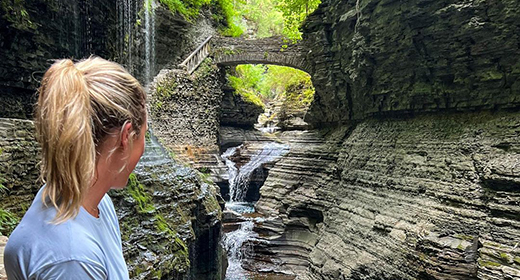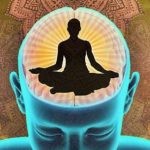You see these words when reading articles and books about yoga…

You hear these words when talking to your yogi friends. If you are not sure what some of them mean, here is a chance to quickly get acquainted with some common yoga terms and concepts from the Yoga language!
8 limbs of yoga: 8 aspects of yoga, 8 principles on how to live in harmony with the world and with yourself described in Yoga Sutras by Patanjali (more on that under Yoga Sutras definition). The eight limbs are Yama (attitude to the world), Niyama (attitude to yourself, self-discipline), Asana (physical pose), Pranayama (breath control), Pratyahara (withdrawal of senses), Dharana (concentration), Dhyana (meditation), Samadhi (enlightenment).
200 RYT / 500 RYT: these terms have nothing to do with yoga philosophy, but it might be you’ve seen these abbreviations in yoga instructor portfolios and wondered what they stand for. So, there is an organization Yoga Alliance that has worked out standards and curriculum requirements for yoga teacher training. A yoga teacher who meets the requirements of Yoga Alliance can use the credential RYT (registered yoga teacher). 200 RYT means that a teacher has completed a 200-hour course registered with Yoga Alliance. (Yoga schools around the world can apply to be able to provide this training). 500 RYT means that a teacher has completed a 500-hour course (or a 200-hour course and then a 300-hour course) and has taught yoga for at least 100 hours since completing the course. There are also E-RYT (experienced yoga teacher) credentials for teachers with more teaching experience.
This is an internationally recognized credential. But it doesn’t mean that every experienced yoga teacher must have this credential. However, now when you see 500 RYT you’ll have an idea of what kind of training the teacher has completed. Some yoga practitioners who don’t plan to become yoga teachers still complete yoga teacher training in order to deepen their practice.
Asana translates as “seat”. Initially, it was used to define a comfortable pose for meditation. Later the word asana started to refer to a yoga pose or yoga posture. That is why yoga poses have -asana in their Sanskrit names (for example, Padmasana, Balasana, Tadasana). As you already know, asana is only one of the many aspects of yoga. Asanas help strengthen the body and better prepare it for meditation. It’s often this physical aspect of yoga that motivates people to start practicing. But very often they continue to explore breathing exercises, meditation, yoga philosophy and other aspects of yoga. Several classic texts on yoga including Hatha Yoga Pradipika mention 84 classic asanas. One asana can have many variations.
Ashtanga yoga: the word “ashtanga” translates as “having 8 components”. “Ashta” in Sanskrit means eight. Nowadays, this yoga term is frequently used to refer to Ashtanga Vinyasa yoga style. During Ashtanga yoga practice, you do a sequence of asanas connected with vinyasas and synchronized with the breath. This is a fast-paced and dynamic style that requires strength and may be challenging for beginners.
Chakras: these are energy centers in our body. There are 7 chakras that are located along the spine, from its base to the top of the head. Some symptoms like particular negative emotions may reveal which of your chakras are blocked. You can use particular yoga poses and lifestyle changes to unblock them.
Hatha yoga is a system of breathing techniques and postures. Hatha yoga is, in fact, a category that includes most yoga styles. For example, Iyengar yoga and Ashtanga vinyasa yoga are forms of Hatha yoga. Hatha yoga classes may vary between different yoga studios and different teachers. But usually, these are slow-paced classes suitable for beginners.
Kundalini defines the coil of energy located at the base of the spine. Kundalini yoga style also known as Laya Yoga is focused on awakening this energy. It is also called “yoga of awareness”. In addition to doing asanas and pranayamas, Kundalini yoga practitioners sing mantras during the practice. It is recommended to wear white clothes to Kundalini yoga classes.
Lotus pose or Padmasana is a yoga pose considered to be the best pose for meditation. This is an advanced pose. To get into Lotus pose sit on the mat with your legs crossed. Put the right foot on the left thigh. The outer part of the right foot should face the left thigh. Put the left foot on the right thigh. Place your relaxed hands on your thighs or push the palms against the floor.
Namaste: this is a word that translates as ‘the light within me bows to the light within you’ or ‘I bow to the divine in you’. It is normally said at the end of the practice.This is also a common greeting in countries like Nepal and India. You say it with your hands pressed together, fingers pointing upwards, and thumbs pointing towards the chest.
Pranayama: the art of breath regulation, breath control. You’ll practice different kinds of breathing techniques throughout your yoga practice. Pranayama exercises are normally done in a comfortable sitting pose or even sitting on a chair. It’s essential that you feel comfortable and your back is straight.
Savasana (Corpse Pose): one of those yoga poses that even people who haven’t been to a single yoga class have heard of (along with Lotus pose and Tree pose, probably) This pose normally ends the practice. You need to lie on your back with your arms and legs straightened, the feet pointing outwards, the palms up, eyes closed. Savasana helps to relax the mind and the body and lets the effects of a yoga practice sink in.
Sun Salutations: Sun Salutation or Surya Namaskar is a dynamic asana sequence. Normally performed in the morning or at the beginning of a yoga practice as a warm-up, Sun Salutation includes 12 poses with the four first poses and four last poses being the same but done in reverse order: Mountain Pose, Upward Salute, Standing Forward fold, Low Lunge, Plank Pose, Four-Limbed Stuff Pose, Upward-facing Dog, Downward-facing Dog, then again Low Lunge, Standing Forward fold, Upward Salute, Tadasana. This would be a half-round of Sun Salutation, you then need to complete another half on the other side. Doing 6—12 rounds of Sun Salutations in the morning may be a good and simple way to form an everyday yoga habit.
Vinyasa: a flow of poses. For example, San Salutation or Cat-Cow are examples of Vinyasa. Different yoga styles focused on flowing sequences of poses such as Ashtanga yoga fall under the category of Vinyasa yoga.
Yoga is literally translated as union, it’s a spiritual and ascetic discipline that includes many aspects. Some of them are Hatha yoga (yoga of proper breath and poses), jnana yoga (the yoga of wisdom and knowledge), and raja yoga (yoga of mind and emotions).
Yoga Nidra: yogic sleep. During Yoga Nidra, you achieve the state of “sleep with awareness” lying in Savasana pose with your eyes closed listening to verbal instructions of your teacher. Yoga Nidra has many benefits including the lowered anxiety and better sleep. Yoga Nidra normally lasts 45—60 minutes. Some yogis say an hour of Yoga Nidra feels like 4 hours of regular sleep.
Yoga props: blocks, bolsters, folded blankets, straps used to deepen the poses or to perform easier variations of poses. Don’t be afraid to use yoga props. They are great companions in your yoga journey. You’ll use props a lot during Iyengar yoga classes.
Yoga Sutras: a set of aphorisms written by Patanjali which is considered to be the foundation of Yoga philosophy. This ancient document didn’t contain the poses. It is not known exactly when the document was created. But it’s definitely more than 1700 years old.







































